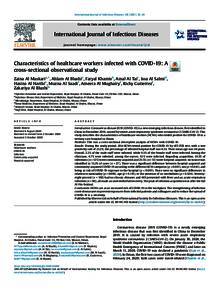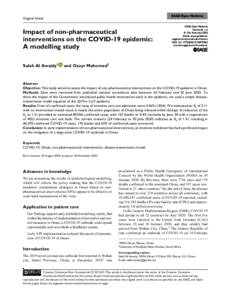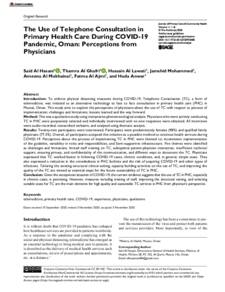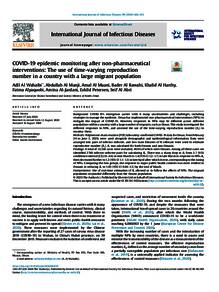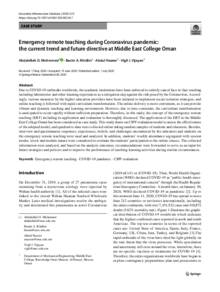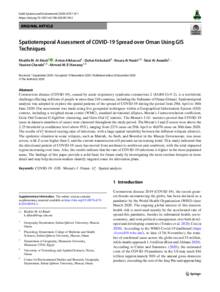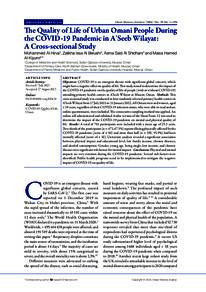وثيقة
Characteristics of healthcare workers infected with COVID-19: A cross-sectional observational study.
المعرف
DOI: 10.1016/j.ijid.2020.10.009
المصدر
International Journal of Infectious Diseases. v. 102, p. 32-36
المساهمون
Al-Blushiyah, Ahlam., مؤلف
Khamis, Faryal., مؤلف
Al-Taiyah, Amal., مؤلف
Al-Salmi, Issa., مؤلف
Al-Harthiyah, Hasina., مؤلف
Al-Saadiyah, Muzna., مؤلف
Al-Mughairyah, Ameera., مؤلف
Gutierrez, Ricky., مؤلف
Al-Blushi, Zakariya., مؤلف
الدولة
Netherlands.
الناشر
Elsevier B.V.
ميلادي
2021-01-01
اللغة
الأنجليزية
الملخص الإنجليزي
Introduction: Coronavirus disease 2019 (COVID-19) is a new emerging infectious disease, first identified in China in December 2019, caused by severe acute respiratory syndrome coronavirus 2 (SARS-CoV-2). This study describes the characteristics of healthcare workers (HCWs) who tested positive for COVID-19 in a tertiary care hospital in Oman. Methods: This was a cross-sectional descriptive analysis of HCWs with COVID-19. Results: During the study period, 204 HCWs tested positive for COVID-19 by rRT-PCR test, with a test positivity rate of 21.2%; the percentage of infected hospital staff was 4.3%. Their mean age was 36 years. Overall, 2.2% of the male staff were infected, while 9.3% of the female staff were infected. Among the clinicians, 4.7% were infected; among the nurses, 4.1% were infected. Regarding acquisition, 61.3% of infections (n = 125) were community-acquired and 25.5% (n = 52) were hospital-acquired; no source was identified in 13.2% of cases (n = 27). There was a significant difference between hospital-acquired and community-acquired COVID-19 according to the different HCW categories (p 0.001), sex (p = 0.041), and being at risk of COVID-19 exposure in the hospital (p 0.001). There were no significant differences in relation to nationality (p = 0498), age (p = 0.119), or the presence of co-morbidities (p = 0.326). Seventy-eight percent (n = 160) had no chronic diseases and 44% presented with fever and an acute respiratory infection (n = 90); all made an uneventful full recovery. The peak of infection acquisition was after the Eid Al Fitr festival. Conclusions: HCWs are at an increased risk of COVID-19 in the workplace. The strengthening of infection control measures to prevent exposures from infected patients and colleagues and to reduce the spread of COVID-19 is a necessity.
ISSN
1201-9712
URL المصدر
قالب العنصر
مقالات الدوريات

